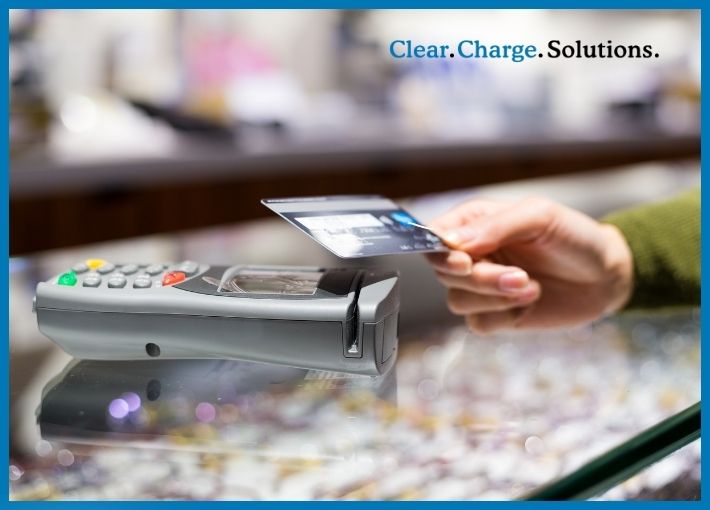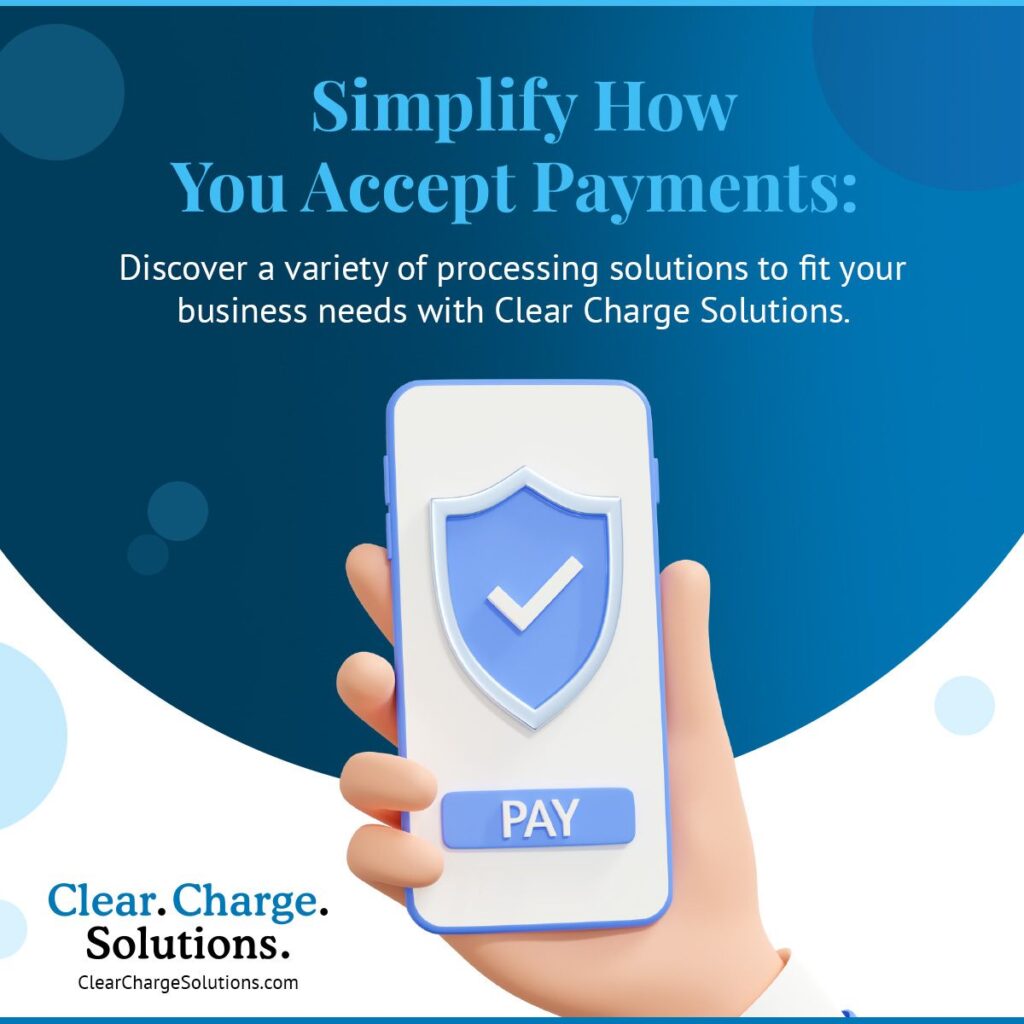Relying solely on historical data and traditional spreadsheets for planning is no longer enough to guarantee success. Achieving true competitive advantage in 2026 demands leveraging the predictive power of Artificial Intelligence. AI moves planning beyond simple budgeting and into sophisticated scenario modeling, precise inventory management, and deep customer behavior analysis, ensuring your resources—and crucially, your revenue streams—are optimized for maximum growth.
The end of the year marks a critical time for executives to finalize their growth strategies. As a credit card processing and payment solutions provider, Clear Charge Solutions understands that smart business planning is inextricably linked to optimized financial data. Read more below to learn the essential steps for successfully integrating AI into your strategy and setting your business up for explosive revenue in the New Year!
Whether you’re an experienced business owner or an entrepreneur just getting started, artificial intelligence (AI) tools can bring greater efficiencies and real insights into your operation.
AI is being used to improve the accuracy and efficiency of inventory planning, logistics, financial and sales analysis and forecasting, project management, and more.
Entrepreneurs planning to launch a new business can use AI to enhance a business plan.
By definition, AI solves problems by simulating human intelligence. The specific roles and applications for AI depend on the business or industry.
Key Takeaways
- AI can significantly improve the accuracy of data analysis for business planning and help identify new sales and business growth opportunities.
- AI’s predictive capabilities can increase the accuracy of business planning.
- Automation of repetitive tasks and processes, such as pulling data for analysis, is another benefit of using AI.
Why Use AI in Business Planning?
Here are some of the ways businesses can use AI in business planning applications.
Improved Accuracy and Efficiency of Data Analysis
Machine learning tools, a branch of AI, are designed to recognize patterns and process a large quantity of data in relatively little time. They can spot trends and produce insights that might not otherwise be evident.
This can help in analyzing and deriving insights from large volumes of data on customers, orders, and company financials.

Enhanced Forecasting and Predictive Capabilities
Also referred to as predictive analytics, the ability of AI to make inferences about future outcomes using existing data can be a huge asset across many different business areas.
For example, the food service company Sysco uses AI for inventory management as well as warehouse and delivery logistics planning. Another impactful business application for predictive AI models is financial and inventory planning.
Automation of Repetitive Tasks and Processes
Any business that relies on manual, rote, or repetitive tasks can be a candidate for automation using AI.
Examples might include pulling data into a spreadsheet for analysis, generating or formatting data, processing documents or information, or requesting approvals.
Identification of New Business Opportunities
AI can help identify growth strategies and opportunities in marketing and sales.
AI-enabled customer relationship management (CRM) software produces insights on lead generation, upsell or cross-sell opportunities, and customer service strategies.
It can also provide businesses with the data to better personalize their offerings and target segments of their customer base.
AI Tools and Platforms for Writing Business Plans
Many generative AI tools and software platforms are available to assist entrepreneurs with the task of writing a business plan. Here is a list of popular AI-based business plan generators.
ChatGPT
Although not a dedicated business plan generator, ChatGPT is one of the best-known and accessible generative AI tools. Users can prompt ChatGPT to quickly generate ideas, draft outlines or sections, and suggest text edits.
Consider ChatGPT’s response to be a draft, not a final version. The information it provides on matters like market research may not be up-to-date or reliable. Any data and references should be double-checked to ensure both factual and contextual accuracy. The writing should be reviewed to ensure it aligns with the writer’s desired tone of voice.
Although a free version is available, a paid subscription to ChatGPT Plus costs $20 per month.
Notion AI
Notion is an AI-enabled workspace and project management tool. Although it can be used for more than generating a business plan, Notion offers both free and paid AI-supported business plan templates.
As an AI-powered productivity tool, Notion can help users quickly generate text as well as automate workflows and tasks. This makes it a useful option for those who wish to use it for individual and team project execution as well as planning.
For those who simply wish to generate a business plan, the platform may present a bit of a learning curve and require an investment of time to use it properly.
Notion has a free plan, but its paid plans start at $8 per month.
Pro AI
Pro AI is an AI platform specifically tailored to business planning, research, and strategy solutions. It has dedicated tools for generating business plans, financial models, and pitch decks as well as an AI business advisor that users can consult.
ProAI can even guide users looking to raise capital, including suggesting investors, funding amounts, and approaches.
Users input their business information and goals and link their social media, analytics, accounting software, and other data to the program, and it learns and adapts accordingly. As such, ProAI is a good tool for those looking for accuracy and assistance with financial projections.
Compared to other tools, ProAI can take considerable time to generate a business plan (up to several days, depending on the depth and level of customization required). There are also potential privacy concerns associated with the sensitivity of the data being shared.
ProAI plans start at $114 per year.
Simplified
Simplified is a workflow and productivity tool with a suite of AI-powered programs to help users create content, manage social media channels, and more. Their AI writing tool can offer suggestions and includes templates for specific types of business plans, from food trucks to real estate services.10
Simplified’ s business plan generator is geared toward solo entrepreneurs, small businesses, and startups. It is easy to learn how to use, making it a good option for those who don’t want to invest significant time in mastering new software.
It can also generate different types of content, integrate with other platforms, and allow multiple users to collaborate, making it a useful tool for project management and execution.
The tool as a whole is not specifically designed for business planning, so it can be limited in terms of data analysis and industry-specific details.
Up to 2,000 words can be generated for free; after that, paid plans start at $20 per month.
Up Metrics
As a dedicated business planning tool, Up metrics promises to simplify business planning with AI-powered insights. It includes an AI assistant, a business plan builder with more than 400 customizable sample plans, and a pitch deck creator.
It also offers financial forecasting and templates to suit different business models.
Up metrics can both generate and edit text, and users can adjust the tone of the content. It also offers users the ability to collaborate on documents, design cover pages, and drag and drop sections into the template.
Potential downsides might include privacy concerns around sharing financial and other business data as well as relatively limited template options and customization options.

How to Use AI in Business Planning
AI can be used for business planning starting from the creation of the initial vision. Here’s how to incorporate AI into your business planning.
- Write a business plan with an AI business plan generator. Whether you use one of the generators mentioned above or one of the many other tools available online, AI-enabled writing programs can provide anything from a draft outline to a comprehensive document to work from. Don’t rely entirely on AI for a finished product. Review and check your business plan for accuracy, tone, and flow.
- Use AI-powered automation to improve your business operations. To optimize the day-to-day operating processes of your business, pinpoint any workflows that include manual, rote, or repetitive tasks, such as note-taking, data entry, or transcription. Then seek out AI automation tools to save time, make the tasks more efficient, and reduce errors.
- Analyze your business data with AI. As your business starts to generate data, whether from leads, orders, sales, customer interactions, social media, or finances, use AI to capture and analyze it. The results can provide crucial information for making decisions about the future of the business in terms of both current offerings and growth opportunities.
- Capture insights with AI to forecast, plan, and set goals. Predictive AI models can be a huge asset in business planning, helping entrepreneurs make decisions about the future based on historical and current data. While this has obvious applications for business financials, it can also be useful for consumer trend forecasting, customer service, and logistics and inventory planning.
Ethical Considerations in AI-Driven Business Planning
As with any AI application, using AI for business planning is not without ethical concerns.
It’s important to be transparent about the use of AI to both stakeholders and customers to maintain relationships of trust and accountability. It’s good practice to make it clear to customers when they are interacting with AI, as with an AI chatbot or a piece of writing generated by AI.
It’s also important to communicate with stakeholders, employees, and decision-makers about your reasons for implementing AI in the business and what appropriate policies and oversight are in place.
Understanding and communicating how any AI model is programmed and why is also an important accountability and ethics consideration. Many AI models have been shown to reproduce patterns of bias and discriminatory behavior when it comes to gender, race, and other aspects of identity. For example, fintech software algorithms have been shown to replicate historical behaviors of discrimination against marginalized and racialized individuals because those algorithms learn from historical datasets.
Future Trends of AI in Business Planning
As AI models improve and their applications become mainstream, expect to see AI becoming a feature in everything from financial software to productivity suites.
Businesses will be able to create more personalized offerings for their customers, thanks to AI integrations in CRM software that can draw insights from large volumes of customer data.
AI tools are also changing the competitive landscape of business and entrepreneurship by making previously specialized creative and technical skills like writing, designing, and coding more accessible.
Companies that adopt and develop strategies to use AI may unlock a significant advantage.
Don’t forget, soft skills and a human touch remain as important as ever. A 2023 survey by software company Redpoint Global found that 73% of consumers believe there is a positive potential for AI in customer experience, but 77% believe that positive customer experiences still require human interaction.
Can I Use ChatGPT to Write a Business Plan?
Among other types of content, ChatGPT can help users quickly generate a business plan by providing ideas, drafts, outlines, or suggestions. However, it’s advisable to review and validate any information that it provides to ensure it’s up-to-date and accurate.
Are There Free AI Tools for Writing Business Plans?
Many free generative AI tools like ChatGPT can assist in writing business plans. Notion and Simplified are examples that include business plan templates for specific types of businesses.
What AI Tools Can Be Used for Business Strategy?
Up metrics and ProAI are two dedicated business planning AI tools that can provide research, strategy, financial forecasting, and presentation templates.
What Is the Future of AI in Business Strategy?
Areas where AI could further transform business strategy in 2025 include:
- Using decision intelligence to help companies augment existing business intelligence capabilities.
- Using generative AI to transform content marketing and creative processes for businesses. Generative AI is a type of artificial intelligence that can produce content such as audio, text, code, video, images, and other data.
- Using swarm learning to improve performance across departments of a business. Swarm learning is decentralized machine learning that enables peer-to-peer collaboration without sharing data.
- Using embedded analytics to improve decision-making across every business area. Embedded analytics is data analysis technology integrated directly into a business software application, platform, or web portal rather than existing as a separate tool.

AI-powered planning is only as effective as the data—and the payment solutions—you use to execute it. Don’t let outdated credit card processing systems slow down the revenue projected for the New Year. Ensure your payment infrastructure is as advanced, efficient, and secure as your business plan demands. Our secure, affordable, and incredibly simple credit card payment services are designed to get you up and running in no time. Contact us today at (877) 847-4478 or check our IG for more information.
Reference: [https://www.investopedia.com/how-to-use-ai-in-business-planning-8610190]









